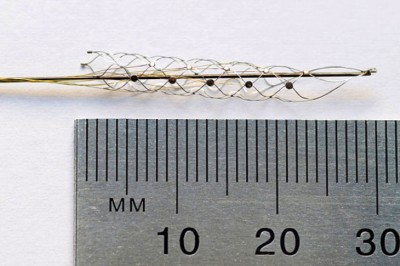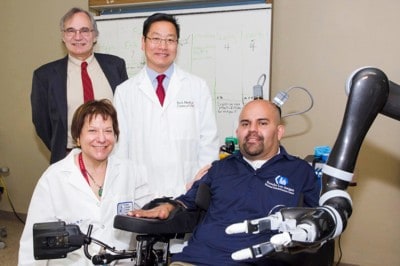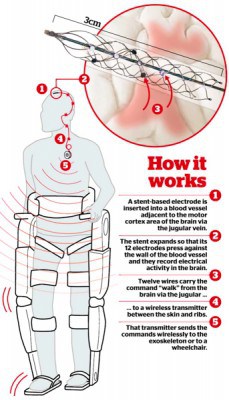
Researchers from Australia have created a minimally-invasive bionic spine that could change the lives of millions living with paralysis. The spine is only 3cm long and could aid those with paralysis to move bionic limbs using subconscious thought.
One great incentive for going forward with this technology is that it’s not as invasive as it seems it should be. There is no open brain surgery involved, which is highly risky, and instead a catheter is used to insert a stent-based electrode into a blood vessel adjacent to the motor cortex part of the brain. The motor cortex is the area of the brain that initiates involuntary muscle movement. The stent-based electrode, once inserted, will expand to put pressure on the walls of the blood vessel so that it can read the electrical impulses being sent from the brain to control the bionic limbs. The actual surgery is comparable to removing clots from blood vessels in the brain and is considered to be low risk.
The impulses created by the motor cortex would be transmitted wirelessly to an exoskeleton, be it a wheelchair, computer, or prosthetic limb. The limb then performs the command, allowing the patient to move and regain control of their body.

Brain-machine interface is the leading focus of research for patients with paralysis today, taking over the original cardiac pacemaker controller used in previous cases. Researcher Thomas Oxley explains that, “The cardiac pacemaker is essentially the classic bionic device — it goes inside a vein, it sits next to the heart and it works for a lifetime. And we are essentially trying to do the exact same thing for the brain. Go up a vein, leave it there, and have a lifetime of recordings coming out of it.” Recent landmark cases for this new brain-focused method include a 2013 study where a thought-controlled robotic arm allowed a woman to pick up a drink and a 2014 study where a primate was able to lift the arm of another primate that was completely sedated just by thinking of the motion.
The human trials are expected to commence next year in Australia, where the researchers will be performing the trial on three paralysis patients and hope to have the brain directly control the exoskeleton. The current method is for the exoskeletons to switch between movements via a joystick so that the person is limited to one motion at a time.

If the trials go well, researchers believe that the device could also be used to treat patients with other neurological disorders such as depression, epilepsy, and Parkinson’s disease. This innovative technology looks promising and could mean that paralysis patients struggling with their condition could get a second chance at a life with movement.
What do you think of the potential of this new technology? Comment your thoughts below and share this article!
This article (New Bionic Spine Could Help Paralyzed People Move Again) is free and open source. You have permission to republish this article under a Creative Commons license with attribution to the author and TrueActivist.com.


